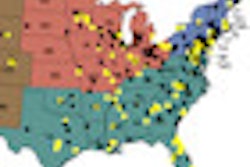Dear Healthcare IT Insider,
Data mining of electronic databases and health records has the potential to positively affect patient treatment and patient safety, now that researchers are increasingly able to rapidly and economically access data. This also holds true for accessing information for patient management.
The American College of Radiology (ACR) established its Dose Index Registry in May 2011 to help imaging facilities compare their CT doses to regional and national values. What's happened over the course of a year? Here's an update.
Also noteworthy is the organization's decision to make its ACR Appropriateness Criteria available electronically through an exclusive licensing agreement with a commercial vendor. The just-in-time accessibility of these evidence-based guidelines, when interfaced with a computerized physician order-entry system, is intended to make imaging safer for patients by warning their doctors about inappropriate exams. Click here to find out what we learned from some in-depth interviews.
We also think you'll be interested in two open-source tools that allow data mining of CT and nuclear medicine exams by extracting radiation dose information in some rather sophisticated ways. Click here to learn the details.
AuntMinnie.com has previously reported on the value of Radtracker, an online quality control management tool developed and used at the University of Maryland. Even excellent IT tools can become less effective over time; how to revive them and keep them fresh was discussed at the recent Society for Imaging Informatics in Medicine (SIIM) annual meeting, and it's the subject of this newsletter's Insider Exclusive.
Also be sure to check out these other stories from SIIM in the Healthcare IT Digital Community:
- Learn how to add a clinical decision-support system and make it work.
- Read about the benefits and challenges of using an automated radiologist peer-review system.
- Find out how the near-total adoption of structured reports at one institution reduced report error rates.



















